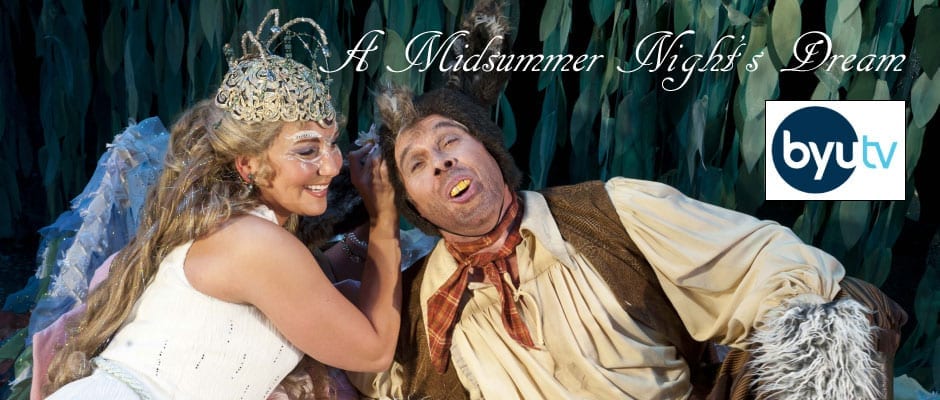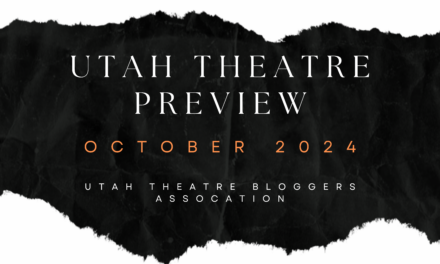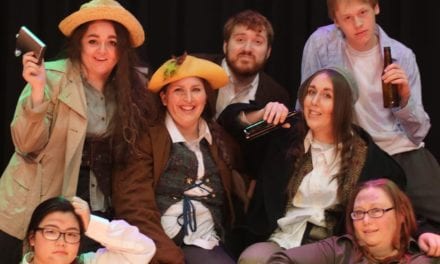CEDAR CITY — I thought that this year’s crop of productions from the Utah Shakespeare Festival was especially good. In my UTBA reviews, I sang the praises of the actors, directors, designers, and the other hard working artists that have come to define the high quality of the Festival’s productions. For almost two months, I’ve told people about how energetic Romeo and Juliet is, how fresh The Music Man feels, and how moving I found The Glass Menagerie to be. But I especially loved this year’s production of A Midsummer Night’s Dream. In fact, I enjoyed it so much that I made the trek to Cedar City twice this summer to see it.
 So, imagine my delight when the Festival announced that it was going to broadcast the August 29th performance of A Midsummer Night’s Dream live on BYUtv at 8 PM. To prepare myself for the broadcast and to understand how it came to be, I asked a few questions to Festival founder Fred Adams, who is also directing the Midsummer production, and actor Kymberly Mellen, who plays Hippolyta and Titania in the production.
So, imagine my delight when the Festival announced that it was going to broadcast the August 29th performance of A Midsummer Night’s Dream live on BYUtv at 8 PM. To prepare myself for the broadcast and to understand how it came to be, I asked a few questions to Festival founder Fred Adams, who is also directing the Midsummer production, and actor Kymberly Mellen, who plays Hippolyta and Titania in the production.
Preparations for the broadcast began long before rehearsals for Midsummer started. Mellen remembers, “We heard rumors about the broadcast somewhere near the first day of registration. They had a camera crew present then. So we had hopes that there would be a broadcast, but no precise information. The camera crew was present for portions of rehearsals.”
Adams explained, “Initial conversations were started by Derek Marquis, managing director of BYU Broadcasting, and Sterling van Wagenen, a member of BYU Broadcasting’s Executive Management Team, and Festival CEO R. Scott Phillips. Derek and Sterling were quite taken by the success of From the Met, Live! and similar programs.” So, the attempt is being made to duplicate that success on television with a Shakespeare production.
Partnering with BYU Broadcasting seemed like a logical choice. Both organizations were started in 1962 and both are uniquely Utah brands with nationwide recognition. “There could not be a better partner for an arts organization to join with than the creative team at BYUtv,” Adams explained. Moreover, there are personal ties between the Festival and Brigham Young University. “I happen to be a BYU graduate,” Adams said. “The use of a BYU costume designer [Janet L. Swenson] was another plus.” Mellen is also an instructor in BYU’s Theatre and Media Arts Department.
Adams said that A Midsummer Night’s Dream was specifically chosen because it was a family-friendly show. Mellen agreed saying, “This is the best of stage and film mediums! A live production that’s not pretending to be anything else, preserved for posterity and broadcast simultaneously so that many more people can have a great night of family entertainment.”
For the broadcast, BYUtv is bringing in nine cameras, dozens of microphones, and a portable satellite uplink. The technology of the broadcast and the needs of television necessitated some changes. “I had to keep in mind all through the rehearsal process that there would be camera angles and tight shots needed to give the film its required varieties,” Adams said. “The length of the production had to be carefully considered, which necessitated some cutting of scenes.”
But working around that technology means that the performance can be presented to more than just the 885 people that can be seated in the Adams Memorial Theatre. With BYUtv’s reach into 60 million homes nationwide, the audience for the broadcast will easily surpass the audience for any performance in the Shakespeare Festival’s history. “It’s exciting and humbling and scary!” said Mellen. “I always envied the actors on the live television dramas in the 1950’s. I loved seeing the doors wobble and the cues slightly off. It felt alive and precarious, even as a viewer.”
Adams’s thoughts on the audience size of the broadcast are also positive. “I think the size of exposure that this program affords is a wonderful and mind-boggling thing. I hope my work will translate will into this totally different medium.”
Adams is correct that the medium of television is quite different from that of live theatre, which means that the experience of audience members in the outdoor Adams Memorial Theatre will differ from viewers at home. “The unique atmosphere of the festival with its crickets, mountain breezes, and canopy of stars will not be evident, but I am hoping that the energy and vitality of the performances, along with the wonderful line delivery will more than make up for these absences.”
Mellen believes that the viewing experience may even be better for the television audience than it is for some seated in the theater. “I can’t wait to see the broadcast and catch the myriad of facial expressions and different character reactions that I can’t see from where I’m standing. The audience will probably feel the same way. The show varies from every seat in the house and this filming will give them the benefit of optimal viewing angles throughout.”
“The subtlety of light and dark will be less intense and we do not have the wonderful tangible empathy from a live audience [with a television audience],” Adams said as he continued to explain the differences between television and live viewing. “However, since this filming will be done with a live audience, I am hoping that the actors will continue to plumb the audience’s moods and energies.”
Yet, much of the excitement of live theatre will be discernible in the broadcast. “If something goes wrong—which I hope it will because that’s part of the magic of live theatre—there’s no going back or making corrections. Everything has to move forward once the momentum starts,” Mellen said. “Contrast that with the process of filming, which is usually very stop and start, with huge breaks of time in between takes, and the most you have to learn is about 5-10 sentences per scene. I’m also excited that the audience will be filmed. I hope the joy they [the audience] experience night after night at Midsummer will be contagious and infect the viewers at home.”
Mellen continued, “We want the people sitting at home on their couches to catch the bug of LIVE theatre and buy tickets to come to Cedar City next summer or go support whatever theatre is nearest them ASAP.”
But, for the most part, the broadcast details are out of the hands of the director and the actors. Adams finished directing the play weeks ago. As for Mellen, she explained, “As actors, we will do what we always do: concentrate on the language, basic relationships and conflict. (And getting our costumes changes done in time!) The process of filming and the broadcast result is not within our control or stewardship. The film crew professionals will do their job splendidly as will the actors and back stage crew and hopefully the result will reflect all of our efforts favorably.”
Whatever happens on Monday night, it will be a landmark event in the history of the Utah Shakespeare Festival and one that will provide some valuable experiences for the people involved. “I think in the long run this project’s success will be measured by its audience responses and the experiences that the film crew and Festival company share and learn from one another,” Adams stated.
Please also visit our review of this production of A Midsummer Night’s Dream. UTBA has also posted a series of short video interviews with Midsummer actors Matt Mueller and Betsy Mugavero. Viewers may also be interested in our video interview with Utah Shakespeare Festival executive director R. Scott Phillips and our written interview with three actors in this season’s productions, including A Midsummer Night’s Dream. BYUtv also has a discussion with Fred Adams and Festival education director Michael Bahr on Shakespeare’s timeless appeal.





